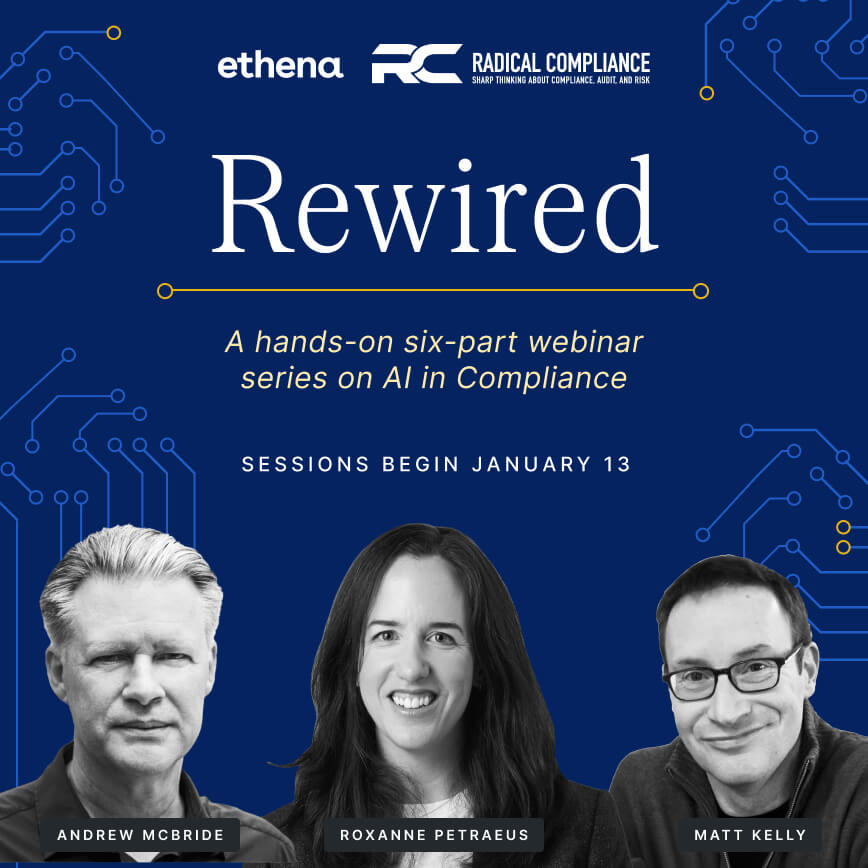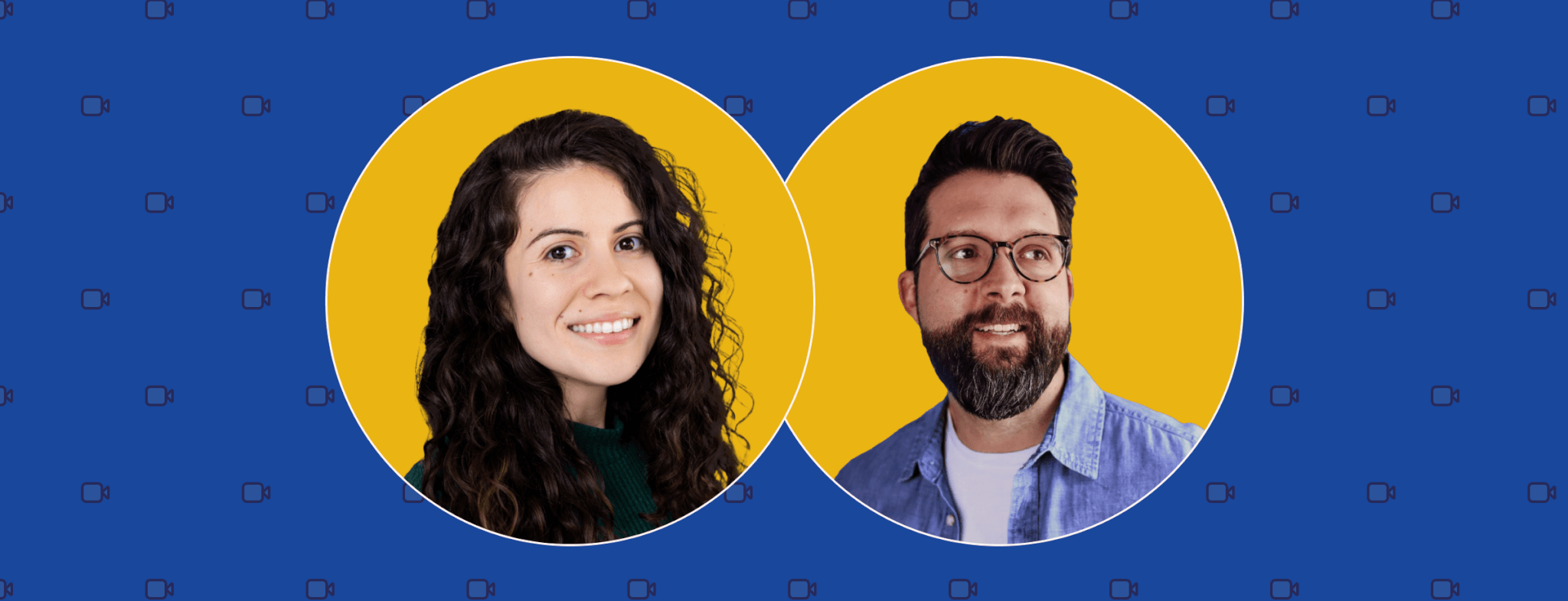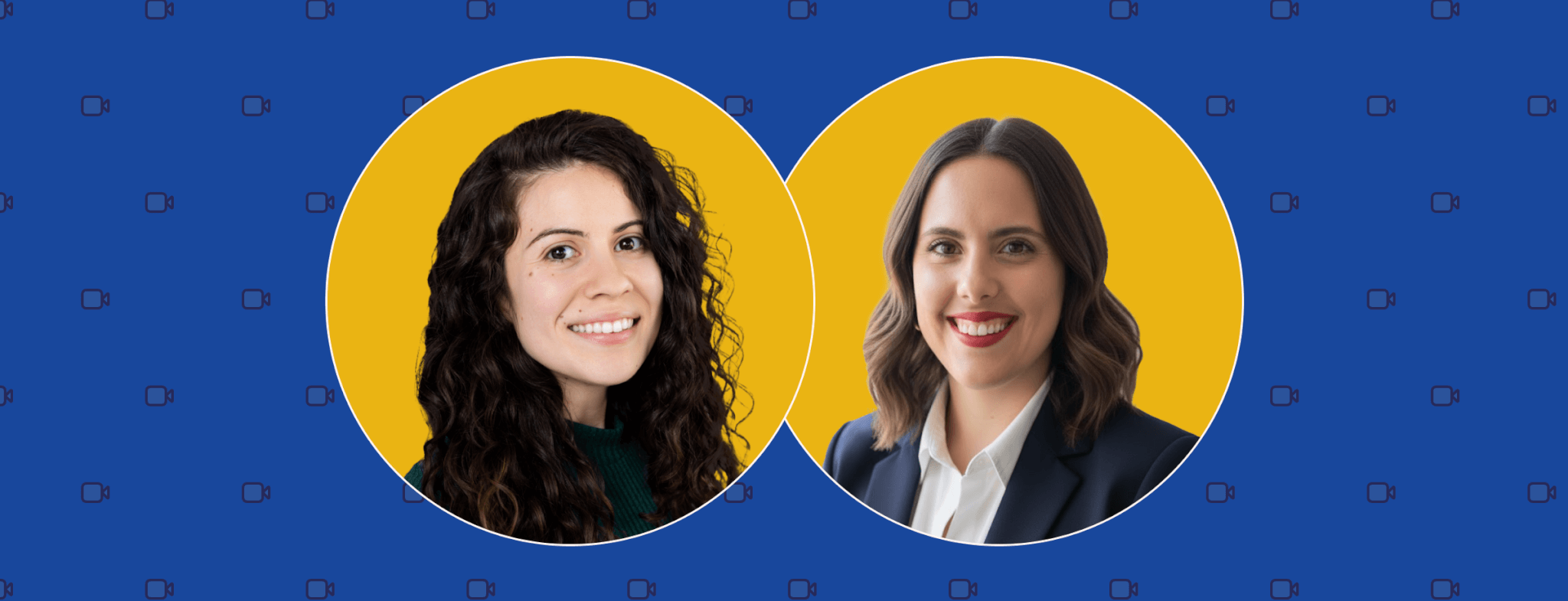A casual conversation with design leaders on what makes your portfolio stand out in the hiring process
On May 3rd, I was joined by Danielle Evans, Cassian Catanzaro (Director of Product Design at Simon Data) and David Stinnette (Head of Design at Front) to shed some light on the recruiting process and what goes into making a great portfolio.
We had such a great time chatting (and sometimes commiserating) about hiring designers, and we’ve pulled together a few of our key takeaways below. Scroll past for the full webinar recording at the bottom of the page.
Key Takeaway #1: Hiring managers want to make the hire!
We got our jobs because we are passionate about design. If we were passionate about recruiting, we would have been recruiters! The faster we can make a hire, the faster we can get back to designing (ideally with a talented new team member). Not only are we on your side, cheering for you at every stage, we are also looking for someone who will accept an offer, should they make it to the end. It’s easy to signal your excitement for a position by writing a short note about why you are interested in the position and tailoring the pieces in your portfolio to align with the company you are applying for. This will really stand out to a recruiter and a hiring manager.
Key Takeaway #2: Carefully select work for your portfolio and share enough context, so we can appreciate it.
We don’t have a ton of time to review portfolios in depth (although if you come onsite, a super complete portfolio will serve you well), instead we are scanning for work that aligns with the work our company is doing and looking for enough context, so we can appreciate what you contributed to each project. It’s better to have fewer, better projects in your portfolio and share work that reflects the type of work you want to be doing. Product designers should show product design work, and brand designers show brand design work. If you want a job on a brand design team at a tech company, pinpoint your projects to target that position. Get specific!
Key Takeaway #3: It’s all about access.
You don’t need a fancy custom website to have a killer portfolio! Often a recruiter will send hiring managers a portfolio via text or Slack and we end up clicking through on our phones. This means having a mobile-compatible site is critical! In addition, we often don’t have the password to view any protected work. Removing barriers is key to getting your portfolio in front of more eyes and ultimately getting the job you want.
Key Takeaway #4: When switching disciplines, time on the job is critical.
You don’t need to do a bootcamp to be a product or brand designer! Instead, spend time working on challenges typically tackled by that discipline and fill your portfolio with your results. Ask your peers to give you feedback on your work and when possible ask mentors to review it. There are so many skills that apply to both disciplines, and being a well-rounded designer is a benefit to any company looking to hire so the time is never wasted, even if you ultimately decide you don’t want to make the switch.
Thank you again to Cassian, Danielle, and David for an excellent and thoughtful conversation! For those who missed it, we’ve placed the recording below.
Interested in joining our design team? Check out our Careers page and apply through our website. Don’t see the exact position for you? Apply anyway! Studies show that some perfectly qualified candidates take themselves out of the running before employers ever get a chance to see their resume.
And to hear more about the Design team at Ethena, check out my blog post, "How We Created Accessible Brand Colors at Ethena"







